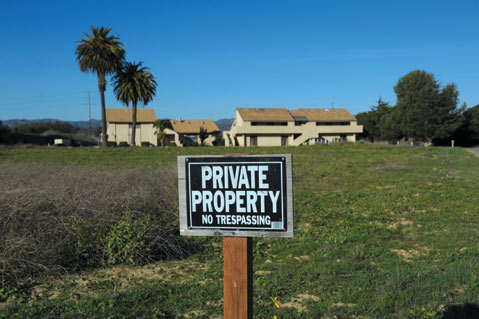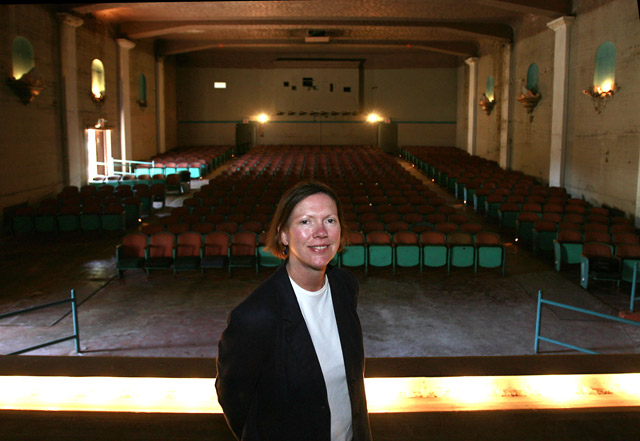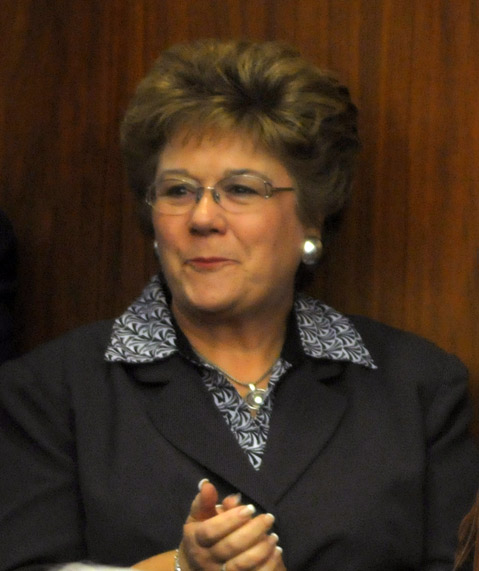Stupid, Inept, or Corrupt?
An Investigation into Who Killed the Lompoc Shelters

I’m no attorney, so I can’t say with any precision what laws may have been broken in connection with the all-too-preventable demise of the Lompoc Housing and Community Development Corporation. But I do have a nose on my face, so I can state with certainty that something stinks. In fact, a lot does.
When Sue Ehrlich, executive director of Lompoc Housing — a politically connected, private nonprofit agency — announced she was closing the only two shelters in the city, she gave everyone only a few days’ notice. Those who work with the homeless population in Santa Barbara County found her timing cruel and gratuitous. Winter is never a good season to shut down any shelter, let alone the only ones in the county’s poorest community. And such short notice — delivered just before the Martin Luther King Jr. public holiday — made it almost impossible for other shelters to be able to provide beds. Nevertheless, Santa Barbara and Santa Maria shelter operators did try and let Ehrlich know that they would come to the Lompoc Shelter to interview some of the men, women, and children who were about to find themselves with nowhere to go. Bizarrely, Ehrlich threatened to call the cops if any of them set foot in her shelter. Even for Ehrlich, who has famously fought with other homeless shelter operators, this seemed extreme.
Ultimately, cooler heads prevailed. The shelters were, in fact, visited; no one got arrested; and some residents even managed to get transferred. Eight days later, the City of Lompoc succeeded in reopening the smaller of the two shelters, Mark’s House, which has 19 beds of transitional housing for women and families. And the New Life Christian Center has opened a warming center. But to date, the fate of the bigger shelter, the 56-bed Bridgehouse, remains very much uncertain.
The failure of Lompoc Housing — foreclosed upon late last year by two private lenders — has ramifications that threaten to seep well past Lompoc’s borders. In the very worst-case scenario, the community could lose two homeless shelters and 255 units of affordable housing, not to mention the $6 million in public taxpayer dollars used to purchase these properties. Worse yet, the County of Santa Barbara and the City of Lompoc might find themselves forced to pay some of that money back to the federal government. Should this come to pass, the county supervisors have been notified they could be on the hook for $1.4 million. Where that money would come from no one knows. Currently, the county supes are eyeballing a general-fund deficit of $17 million.
While the following narrative may be fair, it is by no means balanced. That’s not from lack of effort on our part. Attempts to speak to representatives from Lompoc Housing — its past director, its past president, and its current attorney — have all been met with silence or politely declined.
RED FLAGS FLAPPING
In hindsight, it’s clear that there was no shortage of warning signs that something was seriously amiss with Lompoc Housing. As of 2007, Lompoc Housing simply stopped filing annual reports with the county’s Department of Housing and Community Development, the agency charged with ensuring that federal housing grant recipients follow a blizzard of strict requirements. Had anyone at that county agency raised a hue and cry sooner, no doubt the problem could have been addressed earlier. As it was, it would fall to County Auditor-Controller Bob Geis to raise the alarm. But that wouldn’t happen until February 2011. Likewise, the Lompoc City Council — another conduit for federal housing money — happily rubber-stamped any and all requests by Lompoc Housing for more funding, even though former councilmember Jan Keller, former city attorney Sharon Stuart, and former economic development officer Kate Griffith began asking very pointed questions about Lompoc Housing as early as 2003. Lompoc Housing kept asking for more money — and getting it — while refusing to provide tax returns, bylaws, articles of incorporation, financial statements, or any records showing what had been done with the public money it had already received. “Something clearly wasn’t kosher,” said Griffith, now a city planning commissioner. But their efforts were so stonewalled that they never even managed to find out who was on Lompoc Housing’s board of directors.
There are, of course, many explanations for this strange lack of oversight. Lompoc is a small town, and in small-town politics, most people won’t rock the boat by asking lots of impertinent questions. And if the county Department of Housing and Community Development dropped the ball, that’s almost to be expected. That agency has existed in a frenzied state of perpetual turmoil. In the past seven years, it has had seven directors.

But perhaps the most troubling explanation revolves around the political might of 4th District Supervisor Joni Gray and the intertwining relations she has had with the Lompoc Housing and Community Development Corporation. For many years, Lompoc Housing’s attorney of record was George Wittenburg, Supervisor Gray’s husband. Supervisor Gray (who is now running for a fourth term and spoke on the record for this story on several occasions) has explained that she and her husband never discussed cases. But Wittenburg’s involvement was hard to miss, as he regularly showed up to Lompoc City Council meetings representing his client’s interests. Gray’s connection runs deeper. Her executive assistant, Susan Warnstrom, served on Lompoc Housing’s board for years, most recently as president. (Warnstrom has since resigned from the Lompoc Housing board.) And before working for Gray, Warnstrom worked for Gray’s predecessor, former supervisor and now Superior Court Judge Timothy Staffel. Although Gray now says she always had doubts about Ehrlich — “She never made too much sense,” she said — she expressed admiration for Lompoc Housing and its goals. “They’re a bunch of good people trying to do good things, and their hearts are bigger than their wallets,” she said. Gray said she “absolutely told” Warnstrom she had to keep her involvement with Lompoc Housing separate from her role as executive assistant. “That’s her thing, not my thing,” said Gray. “But it’s sensitive. I can’t be telling her what she can do in her own time any more than I can tell her what church to go to.” Gray stressed that it was never her intent or that of Warnstrom to shield Lompoc Housing from scrutiny.
Two months ago, Gray herself was put on notice by county counsel that the county’s conflict-of-interest rules preclude her from participating further in any votes or discussions involving Lompoc Housing. That’s because Gray — also an attorney — has been a partner in her husband’s firm since 2006. As such, she’s financially benefited by payments made to their firm by Lompoc Housing. (It should be noted that Gray has participated in numerous deliberations by the County Board of Supervisors involving Lompoc Housing since 2006. While the votes were invariably unanimous, the stakes were high, and the resulting actions were often worth millions of dollars for Lompoc Housing.)

The extent to which these connections could have inoculated Lompoc Housing from more rigorous oversight remains a matter of conjecture. But then there’s the case of county employee Liann Noble, a child-protective welfare worker, who got fired. In 2006, Noble had gained entry as an overnight guest — along with her 10-year-old son — to the Bridgehouse homeless shelter using false identification. She was investigating shelter conditions for a Lompoc Record newspaper column to which she occasionally contributed on her own time. But her true identity was discovered when she asked the shelter manager to unlock the toilet paper that was kept in a cabinet. In a written memo, Lompoc Housing director Ehrlich demanded Noble be fired and prosecuted to the full extent of the law. Ehrlich wrote this in a memo that she sent to the county’s powerful Human Relations chief from the fax machine in Supervisor Gray’s office. When it comes to political body language, it doesn’t get much louder than that. (Noble would eventually get reinstated, but only after a three-year court battle. It’s worth noting that the county’s Civil Service Commission twice voted to void Noble’s termination and instead suspend her for using false identification. Amazingly, the county, in order to stop Noble being reinstated, decided to sue its own Civil Service Commission, an event that occurs once an ice age.)
DON’T BLAME THE BUBBLE
By the time the nation’s economic “bubble” violently exploded in 2008, Lompoc Housing was already in deep trouble. It had embarked upon a sweeping program of rapid growth, buying 36 parcels of Lompoc real estate and running 19 projects either already built or in the works. These included two shelters and multiple rental properties to provide a range of housing opportunities for people struggling to get off the streets and onto their feet. By 2003, Ehrlich had moved into major commercial real estate development designed to spark urban revitalization of Lompoc’s downtown. To that end, Lompoc Housing had purchased — with millions of public dollars — Lompoc’s old marquee movie theater and an older hotel, both bursting with historic charm and seismic challenges. It’s unclear how well anyone managing such a portfolio could have navigated the economic crash. But given Ehrlich’s kamikaze tendencies, it was only a matter of time before Lompoc Housing bit the dust. In fact, it may have been Ehrlich’s uncanny ability to antagonize potential allies that precipitated the beginning of Lompoc Housing’s end.
By all accounts, the demise was triggered by the College Park development, a 35-unit complex of two- and three-bedroom apartments, which opened in 2008. Construction took longer than anticipated, and the project cost more than projected. To plug that gap, Lompoc Housing was forced to aggressively refinance its existing properties, going seriously into debt. Maintenance of other rental units suffered. But the wound that was College Park was entirely self-inflicted. For two years, the Housing Authority of the County of Santa Barbara — with a 70-year track record, expertise, and financial resources — was planning to partner with Lompoc Housing. But after 29 meetings, the Housing Authority’s Fred Lamont said Ehrlich unilaterally notified him in 2005 that Lompoc Housing had decided not to work with the Santa Barbara agency. We can only guess how things might have played out had that partnership survived.
Since then, many of Lompoc Housing’s affordable rental units have gone dangerously to seed. Lamont and his board considered assuming management of these properties, but the high cost of rehabilitating the units to a habitable standard was prohibitive. “Instead of fighting blight,” he said, “they created blight.”
PERSONALITY POINTERS
But that’s just one example of Ehrlich cutting off her nose to spite her face. Four years ago, Mike Foley — a Lompoc resident who also runs Santa Barbara’s Casa Esperanza Homeless Shelter — volunteered to write grants to help raise funds for Lompoc’s Bridgehouse. “She looked me in the eye and said, ‘We don’t need your help,’” Foley recalled.
When Santa Maria’s Good Samaritan Shelter wanted to open the first detox center in Lompoc Valley, four neighbors came out against it, but many of Lompoc’s homeless advocates became convinced that Ehrlich was fueling that opposition. The detox center was approved in 2007, and two of the former opponents now serve on its board.
That same self-destructive impulse surfaced last summer, when Lompoc Housing — under pressure from the County of Santa Barbara and the federal Department of Housing and Urban Development (HUD) — sought to negotiate a deal to turn over its affordable housing properties to Cabrillo Economic Development Corporation, a well-respected Ventura developer with experience providing low-income housing. That deal was scuttled after Cabrillo executives complained they’d been denied access to the properties they needed to inspect.
County Auditor Geis reported similar difficulties. A year ago, Geis said he learned Lompoc Housing had failed to provide the county with any annual financial reports, as required of all HUD funding recipients, since 2007. Also missing was the required certification that residents occupying Lompoc Housing’s affordable units met federal income requirements. Geis said getting information from Ehrlich proved exceptionally difficult. Ultimately, Geis said he got three years of checkbooks, and that was only because he threatened to cut off funding outright. What he received astounded him. Lompoc Housing had no accounting system. He pored through three years of old checks. It was like opening a closet and having a massive tangle of Christmas tree lights fall out. “They just made stuff up,” he said. For instance, the county gave Lompoc Housing $50,000 to help get its finances in order; instead, Geis said, that money was used to pay down an existing note.

Warnstrom then approached Geis, but it wasn’t clear to him exactly what hat Warnstrom was wearing — that of board president or as the assistant to Supervisor Gray. Warnstrom told Geis, “We need more money.” If Lompoc Housing went down because the county cut off funds, she warned, the county could find itself legally liable to pay HUD back some of that money. But if the county kicked in enough to help Lompoc Housing rehab its rentals, she promised him, the nonprofit could get back on its feet. Geis, however, refused more money. The mess was just too big.
It was by reading Lompoc Housing’s checkbook that Geis eventually discovered the nonprofit had been making payments to Supervisor Gray’s law firm. He declined to say how many checks or for what amount. But it was enough for Geis to contact the County Counsel’s office. Gray was notified she needed to recuse herself from future votes. Today, Gray acknowledges she should have recused herself and that she wished the county counsel had contacted her sooner. Gray said she intends to cure the problem by retiring from her law firm. That way, she said, she can participate in the effort to find a solution. But when asked about Ehrlich using Gray’s fax machine to demand Liann Noble’s termination for sneaking into the Bridgestone homeless shelter, Gray said, “Oh, jeez, I didn’t know that’s what they were doing.”
Like I say, not being an attorney, I can’t tell you what laws were broken. But from where I sit, the whole thing stinks to high heaven.
4•1•1
On Tuesday, February 21, the Santa Barbara County Board of Supervisors meets to discuss how the Bridgehouse Shelter might be reopened, along with other aspects of the Lompoc Housing and Community Development Corporation.



